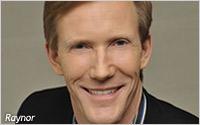retail
Price Power: From Family Dollar To Abercrombie & Fitch
- by Sarah Mahoney @mahoney_sarah, November 8, 2013
 Industry experts are predicting a highly promotional holiday selling season, which means stores will start slashing prices even before they play “Silver Bells.” But
exceptional retailers are those that know how to keep their prices high, instead focusing on product differentiation and brand identity, argues Deloitte’s Michael Raynor, co-author of The
Three Rules. He explains how higher prices pay off for retailers as diverse as Family Dollar and Abercrombie & Fitch.
Industry experts are predicting a highly promotional holiday selling season, which means stores will start slashing prices even before they play “Silver Bells.” But
exceptional retailers are those that know how to keep their prices high, instead focusing on product differentiation and brand identity, argues Deloitte’s Michael Raynor, co-author of The
Three Rules. He explains how higher prices pay off for retailers as diverse as Family Dollar and Abercrombie & Fitch. Q: So first, explain these three rules.
A: We looked at the most consistently profitable companies across many industries, and came up with 344 truly exceptional performers. We found they share three things in common: They all focus on doing something better before cheaper; they all make building revenue a higher priority than cost; and then there are no other rules.
advertisement
advertisement
Q: Family Dollar is a company most would describe as being very focused on cheaper goods and lower costs. How does it fit in?
A: Family Dollar’s success has been a function of higher prices, driving superior profitability for more than 30 years. Its niche is serving a lower-end demographic, and for the first half of the paycheck cycle, they go where prices are cheapest, to big discounters. But for the second half -- when they have just $80 to last until next payday and two kids -- they can no longer afford the gas required to get those low prices. So Family Dollar is essentially a convenience store model: They offer a sufficient product selection in a convenient location. It charges a price premium, but it’s one customers are willing to pay, because they need to reduce basket size.
So it certainly doesn’t advertise, “We have high prices, come shop here.” But it cannot be the most convenient and offer the lowest price. Family Dollar has exploited that quite well for many years, much better than its competitors.
Q: So what will happen, as more of the discounters are building smaller stores in more convenient locations?
A: They are now looking more like those smaller dollar stores. So now you’ve got a bar fight. There’s a fork in the road for these retailers, and our analysis has shown that the ones most likely to survive will be those who pursue the most differentiated strategy. Cutting costs to increase volume may deliver growth and help companies survive. But it doesn’t drive exceptional performance and profitability.
Q: You also mention Abercrombie & Fitch as a superior performer, and yet it’s had plenty of struggles in the last few years. Explain?
A: So that company couldn’t be less like Family Dollar, right? Yet, it has also had superior performance, and despite being less profitable in recent years, it has performed better than its competitors. It charges as much as 20, 30 or even 40% more. But it offers a highly differentiated customer experience. And during the recession, when its competitors lowered prices, it stuck to its guns. Price signaling is an important part of brand value. It’s true for wine -- how many times do people look at a wine list and say, ‘I am not going to get the cheapest one?’
Q: It’s also been a controversial company. Remember the recent “No fat people here” brouhaha?
A: What that illustrates is that seeking out a differentiated space imposes choices. Differentiation requires being different, and you will not be everyone’s first choice. But it’s the companies that are willing to commit to that strategy, that are far more likely to generate superior profits over the long haul, driving relatively higher prices.
Q: So cutting prices is never the right approach?
A: Well, everyone needs to focus on lower costs. But my claim is that the right hard problem to solve is the differentiation and revenue problem, not the price and cost problem. If you
commit to those problems, you have much better odds of being exceptional.




